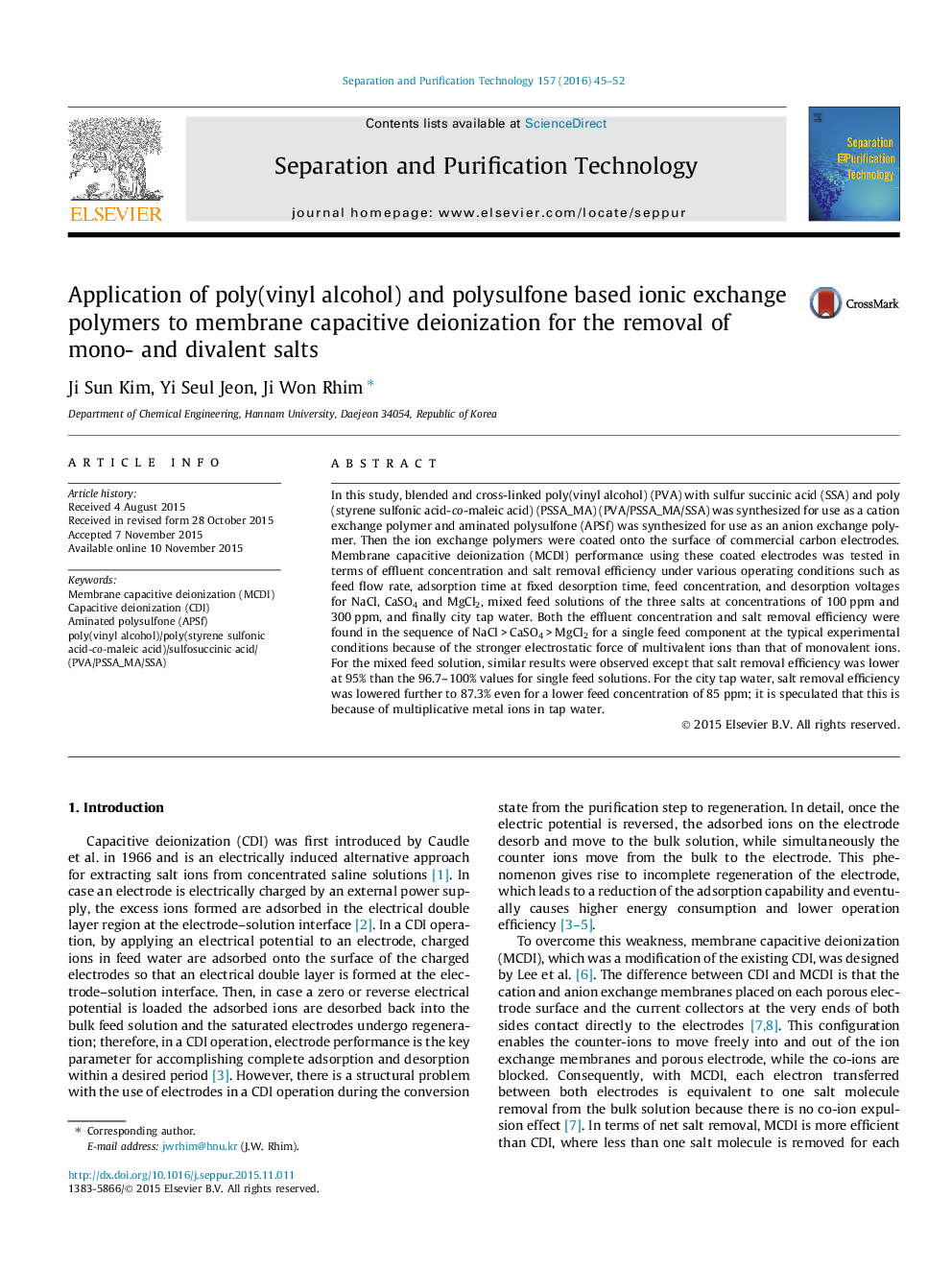| کد مقاله | کد نشریه | سال انتشار | مقاله انگلیسی | نسخه تمام متن |
|---|---|---|---|---|
| 640243 | 1456963 | 2016 | 8 صفحه PDF | دانلود رایگان |

• Poly(vinyl alcohol) and polysulfone based ionic exchange polymers are used for MCDI.
• The separation of NaCl, CaSO4, and MgCl2 under various conditions are carried out.
• For a single component, the performance efficiency was NaCl > CaSO4 > MgCl2.
• For a mixed solution with 300 ppm, the removal efficiency was 88%.
• For city tap water, removal efficiency was 87.3% due to more multivalent metal ions.
In this study, blended and cross-linked poly(vinyl alcohol) (PVA) with sulfur succinic acid (SSA) and poly(styrene sulfonic acid-co-maleic acid) (PSSA_MA) (PVA/PSSA_MA/SSA) was synthesized for use as a cation exchange polymer and aminated polysulfone (APSf) was synthesized for use as an anion exchange polymer. Then the ion exchange polymers were coated onto the surface of commercial carbon electrodes. Membrane capacitive deionization (MCDI) performance using these coated electrodes was tested in terms of effluent concentration and salt removal efficiency under various operating conditions such as feed flow rate, adsorption time at fixed desorption time, feed concentration, and desorption voltages for NaCl, CaSO4 and MgCl2, mixed feed solutions of the three salts at concentrations of 100 ppm and 300 ppm, and finally city tap water. Both the effluent concentration and salt removal efficiency were found in the sequence of NaCl > CaSO4 > MgCl2 for a single feed component at the typical experimental conditions because of the stronger electrostatic force of multivalent ions than that of monovalent ions. For the mixed feed solution, similar results were observed except that salt removal efficiency was lower at 95% than the 96.7–100% values for single feed solutions. For the city tap water, salt removal efficiency was lowered further to 87.3% even for a lower feed concentration of 85 ppm; it is speculated that this is because of multiplicative metal ions in tap water.
Performance test for the mixed feed solution under the conditions of 5 min/1 min adsorption/desorption time, 1 V/−0.4 V adsorption/desorption voltage, and 15 ml/min flow rate.Figure optionsDownload as PowerPoint slide
Journal: Separation and Purification Technology - Volume 157, 8 January 2016, Pages 45–52